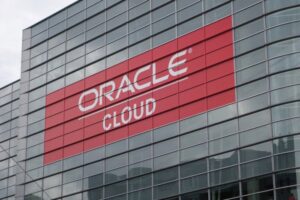
‘Legacy systems’ often get a bit of a rough time in the IT community. But perhaps this is unfair. After all, in many cases you’re talking about software platforms that have lasted and been effective for 20 or 30 years – most of us don’t own cars that old. A long, useful life in an environment as fast-moving as the tech sector is to be applauded.
Cloud is where many tech businesses are now trying to create new legacy systems – software that will last for decades to come. And you might imagine that everyone in the boardroom is happy with this approach. Surely a 30-year lifespan on the new technology will save huge sums of money and underpin future growth?
Of all departments, you’d think finance would applaud this concept the hardest. Yet the truth is that cloud may actually force CFOs to confront some hard truths.
Perhaps the major crux of the issue is that most finance heads traditionally like the balance sheet depreciation associated with capital expenses. They buy servers and hardware and those are solid, measurable depreciating assets. Cloud, however, is a regular operating cost – a subscription – and that impacts the balance sheet every month.
We’ve already seen CIOs who champion cloud migration getting in arguments with their CFOs about what that will mean for the bottom line. It’s becoming increasingly evident that finance departments will have to get used to the new realities of what 21st Century tech companies look like. However, some hand holding is going to be needed.
Inviting the whole C-suite to the party
CIOs will have to sell this idea of cloud to their C-suite colleagues. That means they’ll have to argue for technology’s role as a business driver – with cloud sitting at its heart. That will often mean moving more workloads there or writing new applications to demonstrate its value to the broader organization.
And as part and parcel of this, operating expenses are going to go up because moving more workloads means switching to multi-cloud solutions. Not every cloud is right for every workload, so more and more corporations are going to have to share their operations between Azure, AWS and Google Cloud.
In many cases this will be a tough sell, hence CIOs will have to ensure that their boards understand the value-add of cloud solutions and that the IT paradigm is shifting from capital to operating expenditure. Although CFOs may miss out on depreciation and amortization, they’ll be able to invest more flexibly, avoid large upfront capital costs and scale up more swiftly for future requirements.
Your current cloud may not be the right cloud
Another challenge for CIOs is that so much current cloud usage is not fit for purpose. Even those companies who moved to the cloud ten years ago are having to upgrade and rethink their approach in light of broader corporate ESG goals.
Those early adopters in particular, who moved to cloud-based solutions a decade ago or longer, are now having to consider emissions and environmental issues that probably didn’t enter their thinking the first time around. Those initial workloads were also typically all Virtual Machine (VM) based. These organizations are usually still running heavy VM footprints in public cloud, and really just treating it like another data center and not actually using cloud for what it is.
But just as transitioning to cloud can actually be a catalyst for better sustainability, so too can moving from an existing older solution to something that’s more up to date. Moving mission-critical software to a modern public cloud can enable an organization to get rid of old, high-emission data centers – whether their own or from an older cloud solution – and therefore save hundreds of tons of CO2 in an eyeblink.
This is actually another opportunity to demonstrate the value of cloud. For years, corporations have driven more sustainable and green policies from the top, striving to meet 2025 and 2030 climate change goals, and for years CIOs and CTOs have struggled how to execute and reach those CEO-driven sustainability targets.
Cloud is giving them that opportunity by enabling them to demonstrate the vastly reduced carbon impact of a modern outsourced enterprise software solution.
The new face of business tech
We’re past the era of cloud as the shiny new toy for companies to play with. We’re now in the era where better iterations of cloud are here and CIOs have to justify seizing those opportunities. A big part of that will be working as a team across the C-suite to ensure it’s managed and further developed successfully.
The sustainability argument is a strong one for the board at large, but it’s not necessarily one for the finance team. Instead, CIOs will have to show those colleagues that a significantly increased operational cost actually benefits the business.
And the best way to do that is to get them to think of the new multi-cloud solution as a new legacy system waiting to happen. It may cost, and it may not have inbuilt financial depreciation, but it can be the foundation upon which the next two decades of your business are built.
By Mark Ardito, VP – Cloud Modernization at Kin + Carta

Mark is a seasoned IT Executive with many years of experience specializing in transforming large enterprises to become Cloud Native companies. Mark’s proven track record with Cloud Strategy, Cloud Migration and Digital Transformation leadership makes him a leader in the area of cloud technology.



